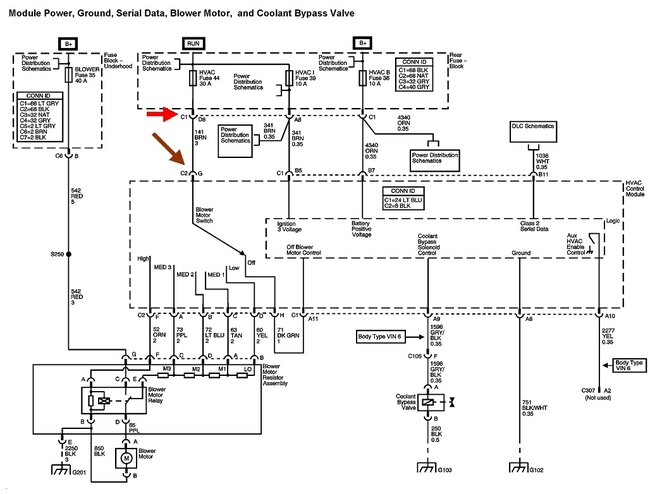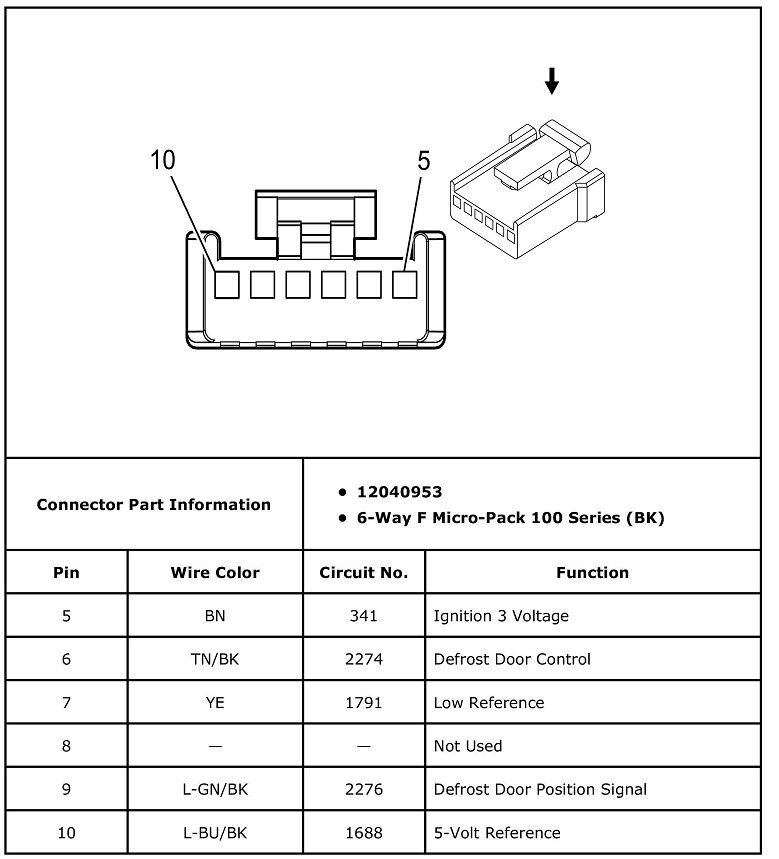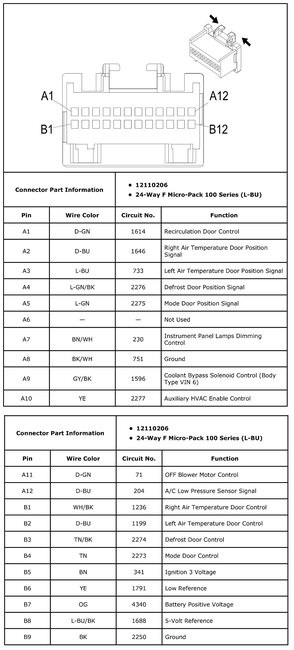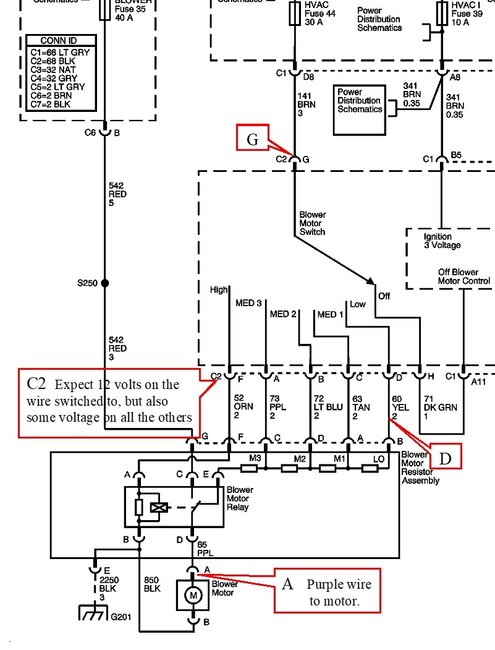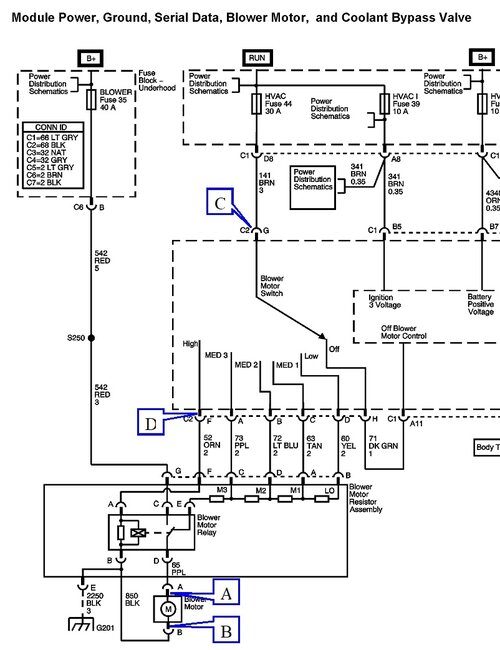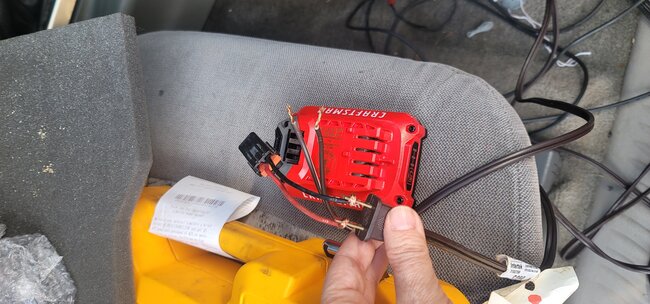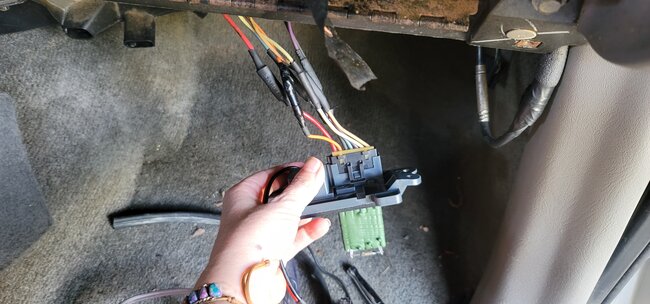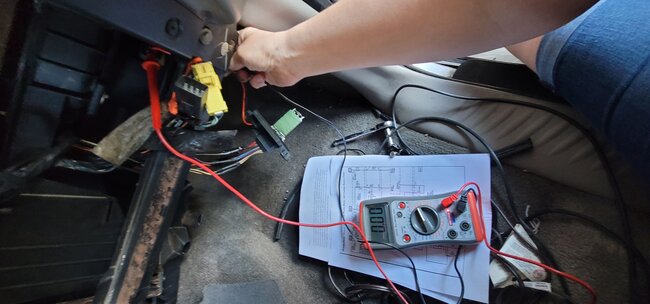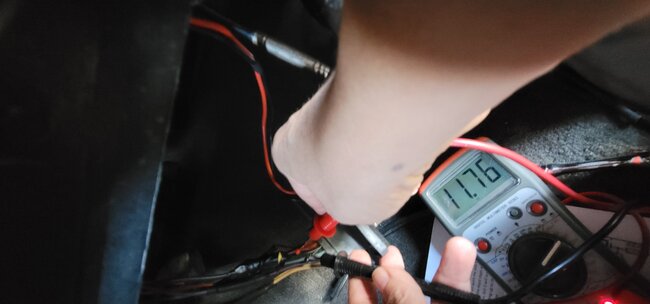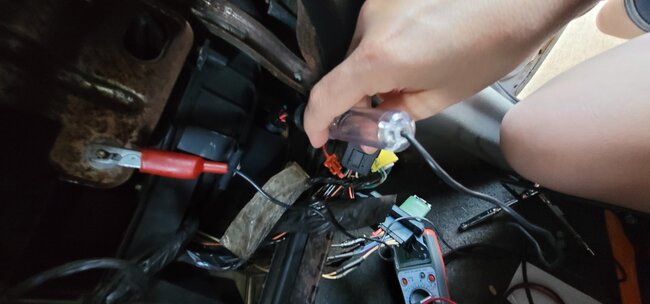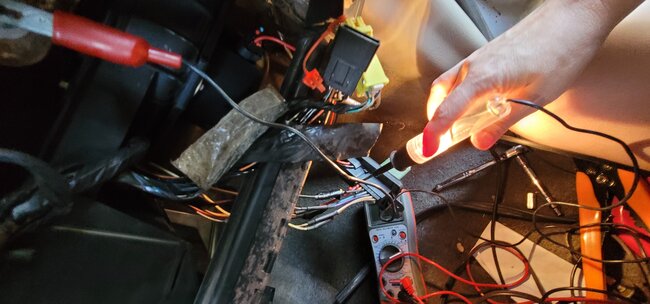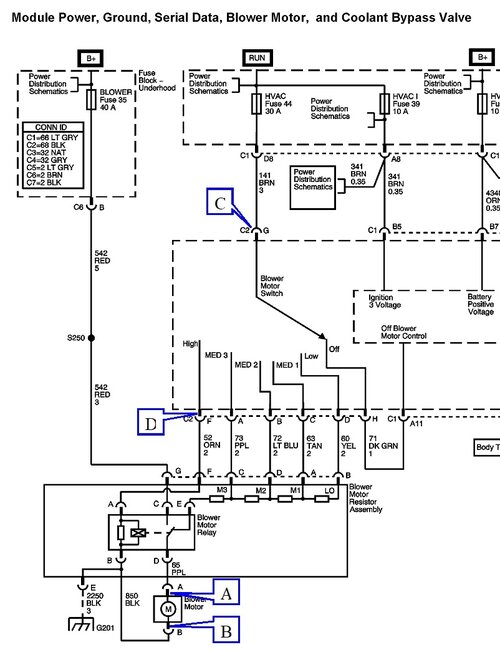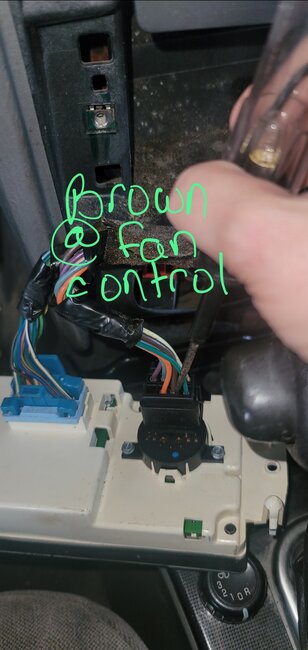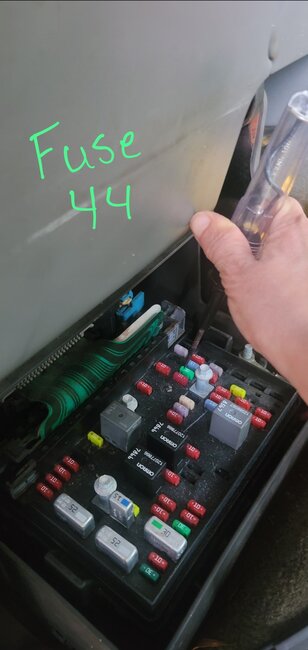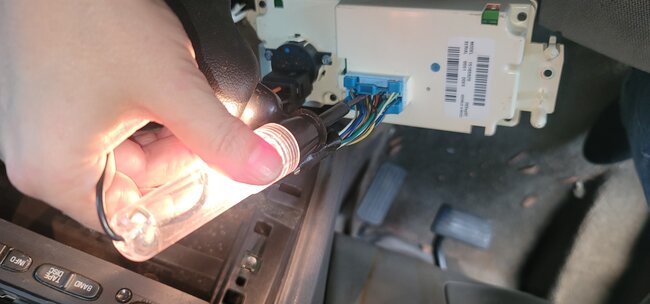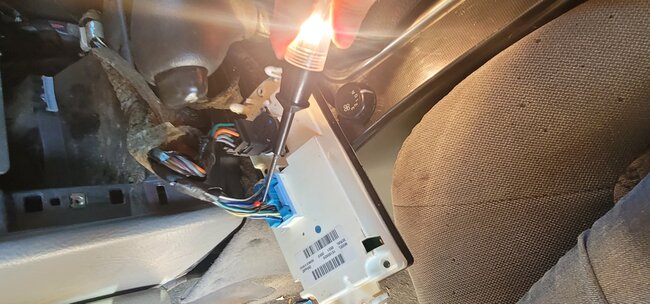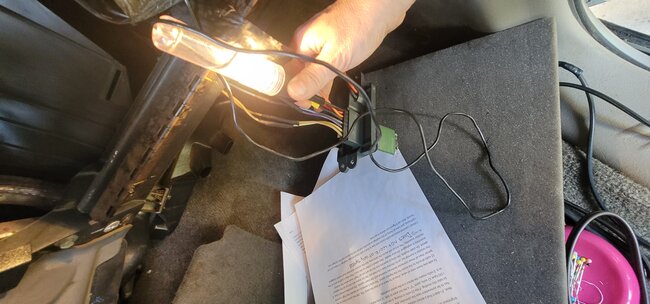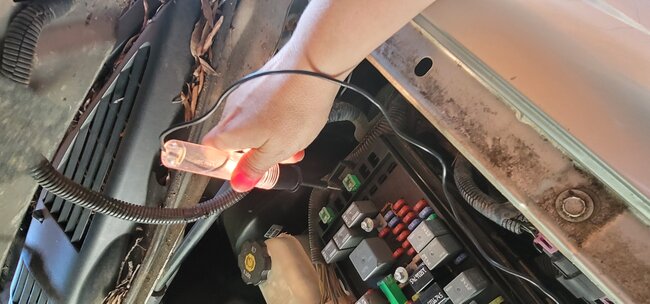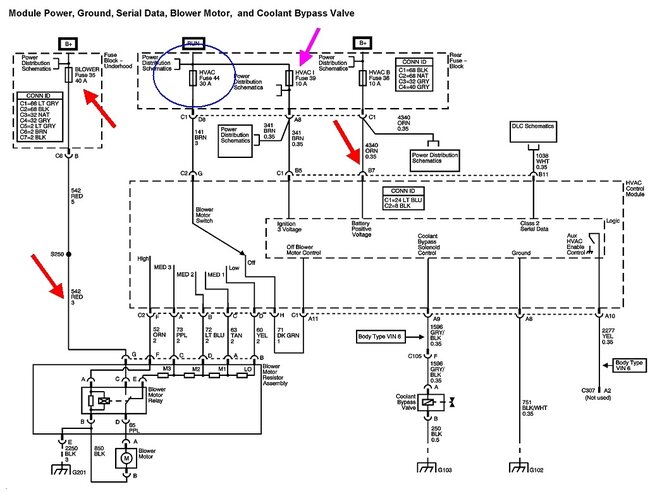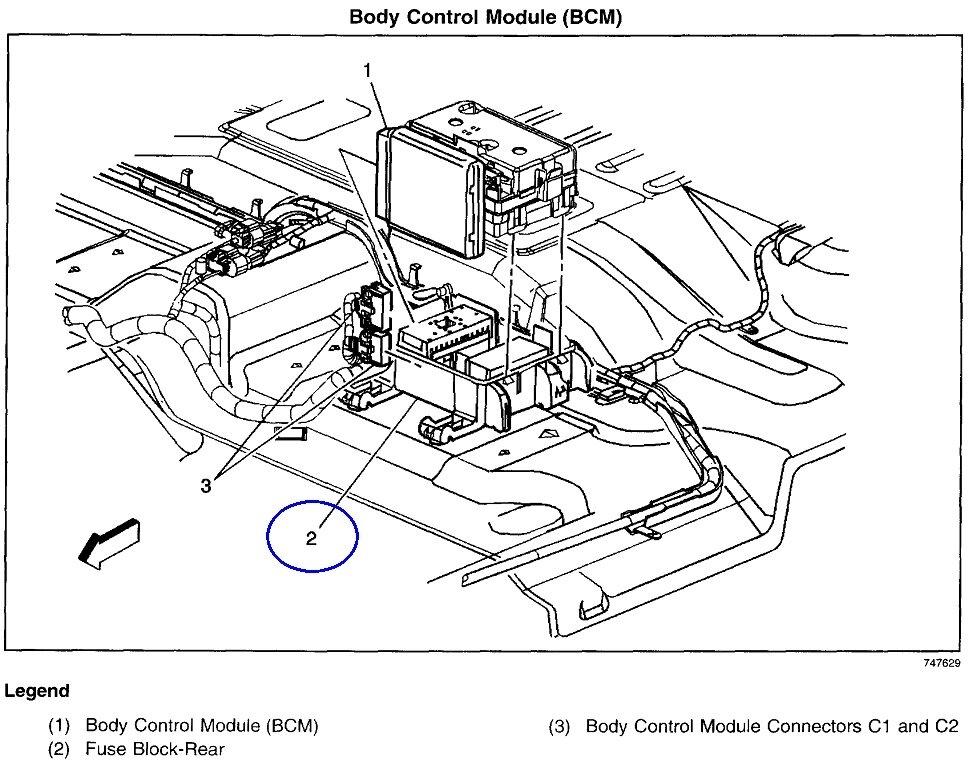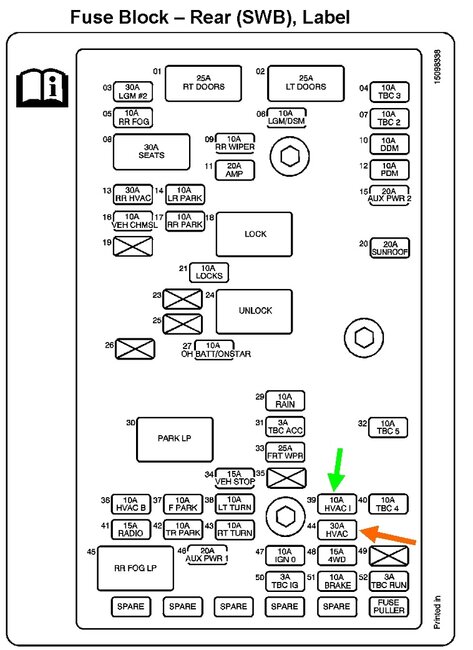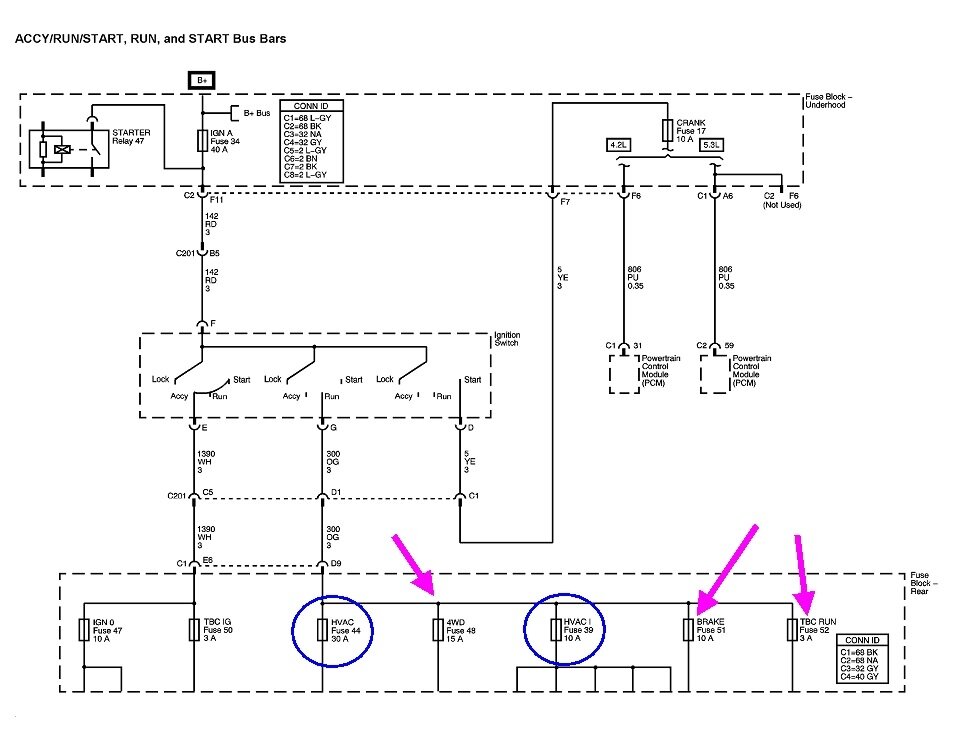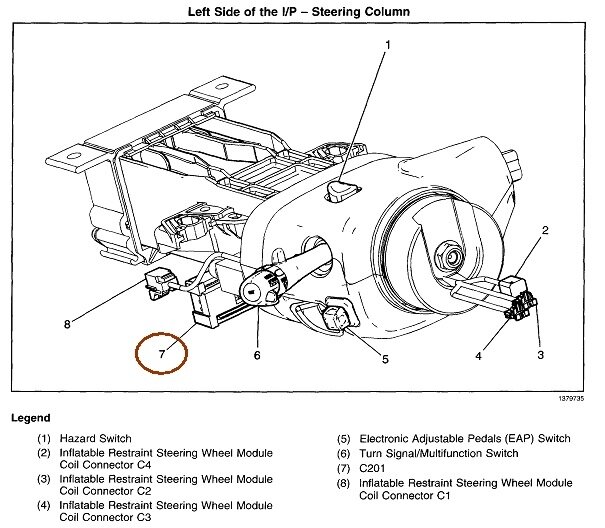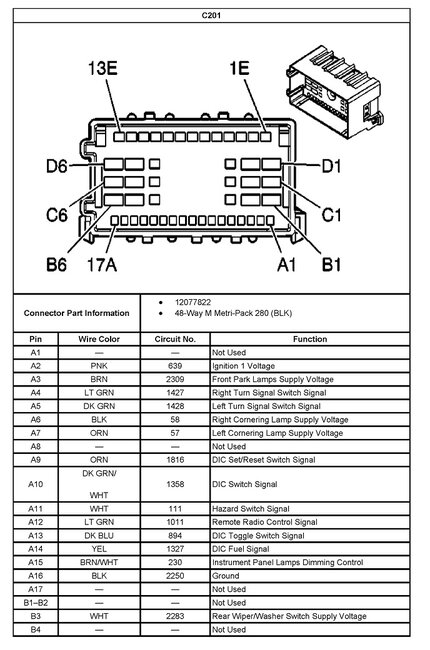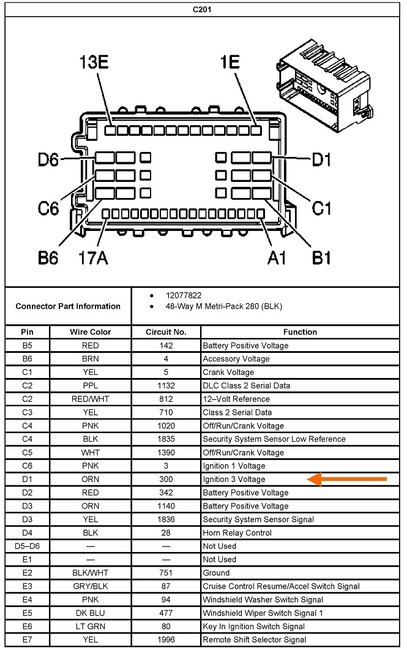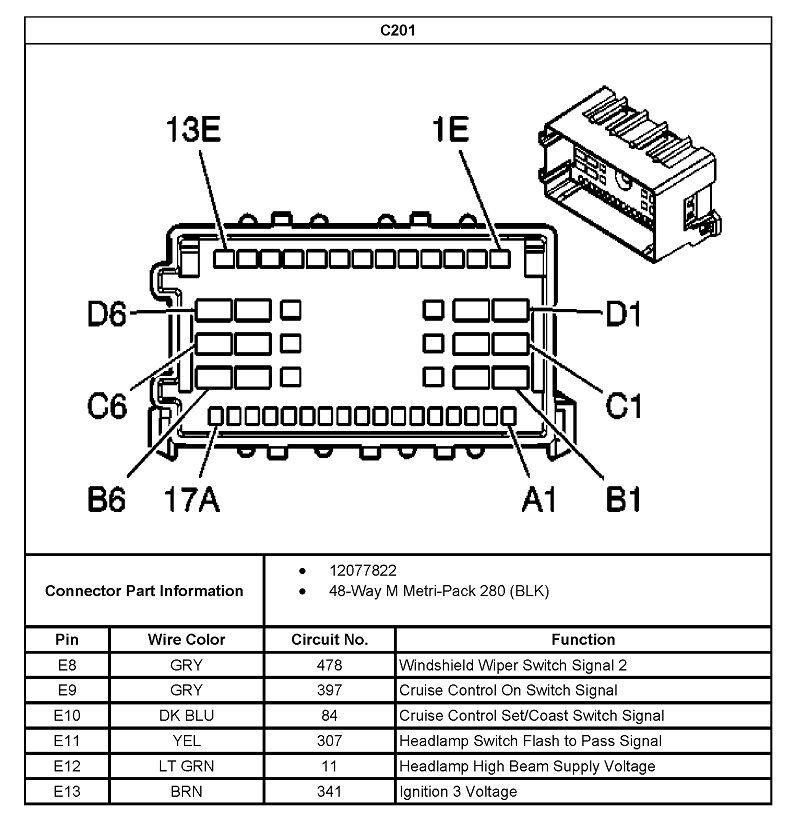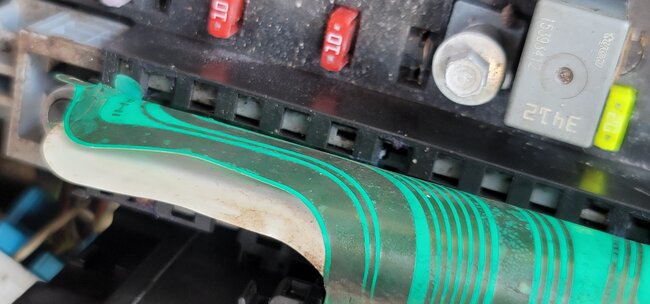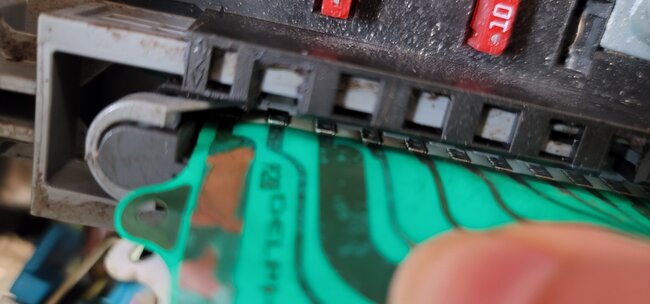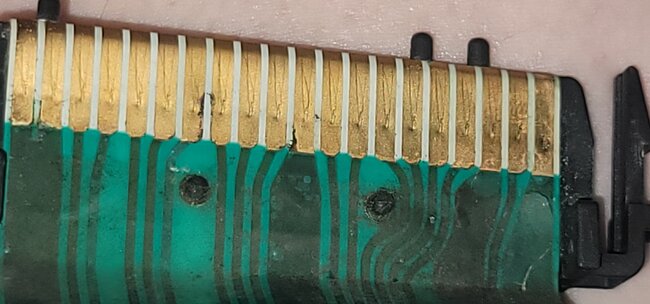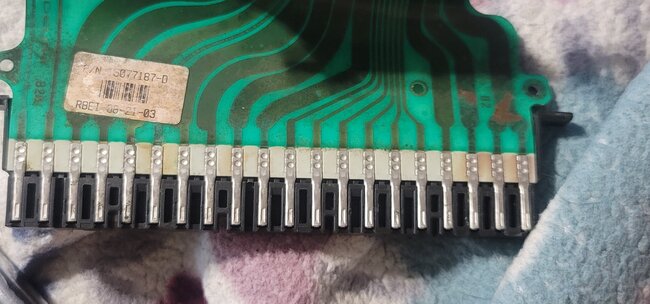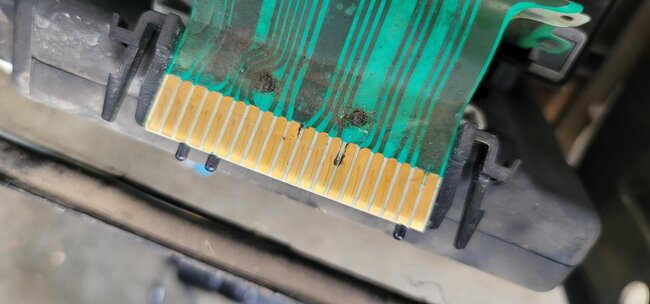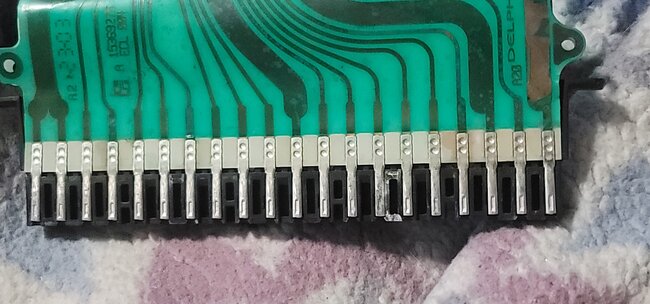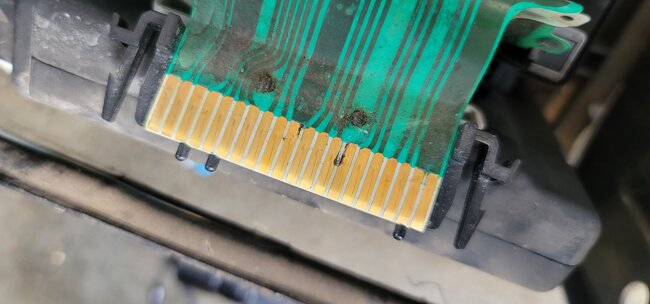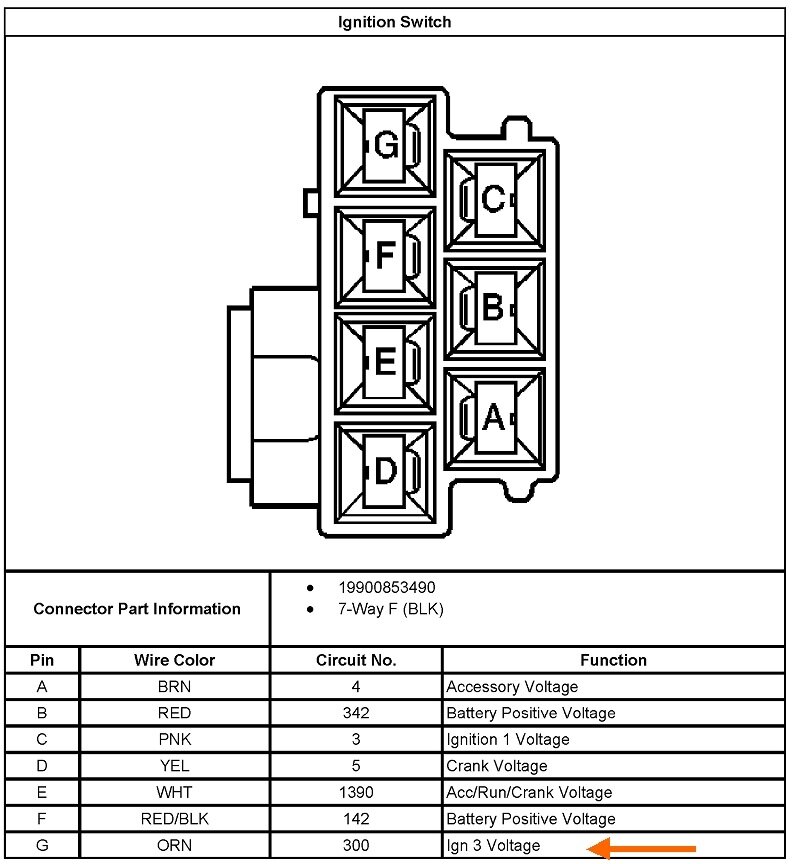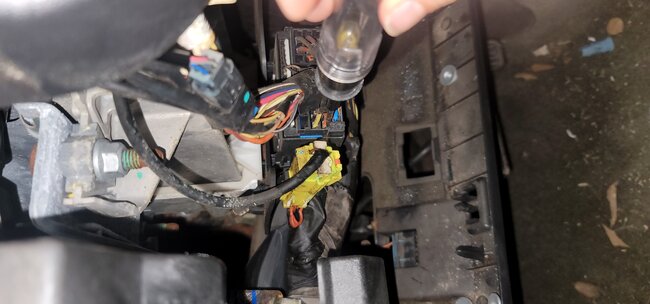Dandy. What is the pigtail you're referring to? Can you point it out on the diagram? I chopped off the part of the diagram we don't need so I could enlarge the good part.
The following will help me understand what you've found so far:
"When I check voltage coming from the pigtail, I have power."
1. Where is that on the diagram, and what is the voltage you found? If you aren't sure how to follow diagrams, tell me the wire color, what it plugs into, the number of wires in total in that plug, or anything else that might help me find it on the diagram. Are you using a digital voltmeter or a test light? With this type of problem, a test light can be more accurate than a voltmeter, but either one will get this solved.
If you're measuring at point "A" on the purple wire at the motor, this is where my concern came from that you had everything plugged in. If you have 3 - 12 volts there in any speed setting, the motor will run unless there's a break in the ground circuit, (black wire). To identify that, measure on the motor's black wire. Don't worry if you find a couple of tenths of a volt. It's anything higher we don't want to see. That would be proof of a break in that circuit.
2. "When I go through each of the fan speeds, I get battery voltage".
Are you measuring at one point as you switch through the speed settings, or are you measuring at each of the wires in connector C2, terminals A, B, C, D, F, and H as you switch to the corresponding speed? There's a big potential source of confusion here. When you switch to a certain speed, you should find 12 volts on its corresponding wire, but at the same time, you will find some voltage on all the others. Suppose, for example, you switch to "Medium 2". There will be 12 volts on the light blue wire, terminal "B" at C2 on the controller, and on terminal "D" on the resistor assembly. Some of that voltage will go through the individual resistors in that assembly and appear at the resistor's other terminals. There is a way to check this further, but for this problem it's pointless. We don't care what exact voltages we find. If there's some, the motor should be running.
3. "When I plug in to the resistor, I have no power coming out of the resistor on the main wire that plugs in to the blower motor." This contradicts what you found in # 1 where you said you do have power. This is also why I assumed you had the purple wire unplugged from the motor and you were measuring on it. This is where my analogy of your foot on the garden hose comes from. A common cause of this problem is a badly overheated connector terminal somewhere in the circuit. That introduces a lot of resistance, just like standing on the garden hose introduces a lot of resistance to the flow of water. The voltage drop across the burned terminal, and the pressure drop across your foot, do not occur until you try to get current, or water, to flow THROUGH that resistance. That means having the hose connected to the faucet and the nozzle opened, and it means having the circuit connected to the fuse, and everything in that circuit connected so current has a path to flow.
Use the red callouts I added to indicate where you found voltage, how much voltage, and if it depended on the speed switch position.
Part 2.
If I haven't confused you sufficiently yet, here's how I would approach this. Remember, unless specified, everything is plugged in and connected. When this is a circuit I'm just learning about, I start at the beginning, the battery positive post or the fuse for this circuit, then work my way through it, test point by test point, to the end, usually meaning ground. This involves the most steps and takes the longest since many of those test points are hard to find or hard to get to, but it will lead to you to the defect. Here we are most likely to find 12 volts at all the test points leading up to the defect, then, at the next test point right after the defect, we'll find 0 volts or very low voltage.
The more efficient way is to find a spot in the middle of the circuit and start there. You have to know what to expect, or what should be there for voltage. If you find voltage, everything has to be okay from the fuse, up to that point. The defect has to be in the second half of the circuit. You can do the same thing there. Find a convenient test point in the middle of that half, then decide if you have the voltage expected or not. This method requires the fewest steps and is the most efficient.
One clinker to my method is due to the most common cause of a dead fan motor being the motor itself, so I would start there. It's also usually an easy point to reach, right under the dash. Use the second diagram with the blue callouts. I'd measure at point "A". If there's voltage there, I'd measure at point "B" next. If there's voltage there, the ground circuit has a break in it. If's there's no voltage, the motor is defective.
Hint: If there's less than 12 volts at point "A", and close to 0 volts on point "B", the ground circuit, some of the original 12 volts is being dropped across the resistor assembly. That means current is flowing as it should, including through the motor. Electrically the motor is okay, but it has tight bearings. If unbolted and removed from the housing, you're likely to see it spinning very slowly. Tight bearings are an extremely common cause of resistor assemblies burning out repeatedly, as in every few weeks. Most of them in other car brands have a built-in thermal fuse.
To continue, if there's no voltage on the purple wire, I'd unplug it and measure again. If there's still 0 volts, I'm going to find a hard break, as in a disconnected plug, blown fuse, a switch turned off, or something like that. If there is 12 volts now, it points to excessive undesired resistance in the circuit. That's when I'd expect to find a blackened terminal, often with melted plastic around it.
Another hint: Digital voltmeters work by measuring electrical pressure, (voltage). As such, practically no current flows through them for it to do its job. When the defect is excessive resistance, all it takes is a tiny tickle of current to sneak through for the voltmeter to falsely "see" 12 volts. That's the same as finding 50 psi of water pressure at the closed nozzle on the hose while your foot is blocking that hose by 99 percent.
The common, old-fashioned test lights work by current flowing through them to make the incandescent bulb's filament glow. With a defect of excessive resistance in the circuit, not enough current can get through to light up that test light. That's why they can provide more accurate results. The test light is taking the place of the unplugged motor. The downside here is fan motors typically draw more than five amps, which might not be able to get through the defect. Test lights typically draw just a fraction of an amp. That MAY be able to get through.
Hint number three is if you care to experiment, use the test light AND the voltmeter at the same time. The test light will cause current to want to flow through the defect and will cause a corresponding drop in voltage. The voltmeter will show something significantly less than 12 volts while the test light's brightness is hard to differentiate between those small differences in voltage.
Next, if I didn't find a defect related to the motor, point "C" is the next place I'd look. I know the defect has to be somewhere near the controller, and it's going to have to be removed anyway, so I'll do it now to take this reading. If the 12 volts is missing, it can only be a blown fuse or a break in the brown wire. If I DO have 12 volts, point "D" is the last place to look. 12 volts there indicates the resistor has the defect in it. 0 volts means the defect is in the switch assembly.
To add one more note of value, since as far back as at least the early '70s, GM has used a relay to switch 12 volts directly to the motor for the highest speed. The relay's contacts can handle that high current better than all those connector terminals involved with the lower speeds. This provides a major clue. If the resistor is burned out, or its thermal fuse is burned out, the fan motor will still run on the highest speed. On older models, the relay is separate and the fan will run on "high" even when the resistor assembly is unplugged. On your model, they added a clinker to the story. That relay is built as part of the resistor assembly. The circuit still works the same way, but the resistor assembly must remain plugged in.
I think I covered every possible cause and how to find it with these voltage readings. If I have you too confused, just take as many of the readings as possible and tell me the places and the voltages you found, then we'll figure out where to go next.
Images (Click to make bigger)
Thursday, September 14th, 2023 AT 5:02 PM
